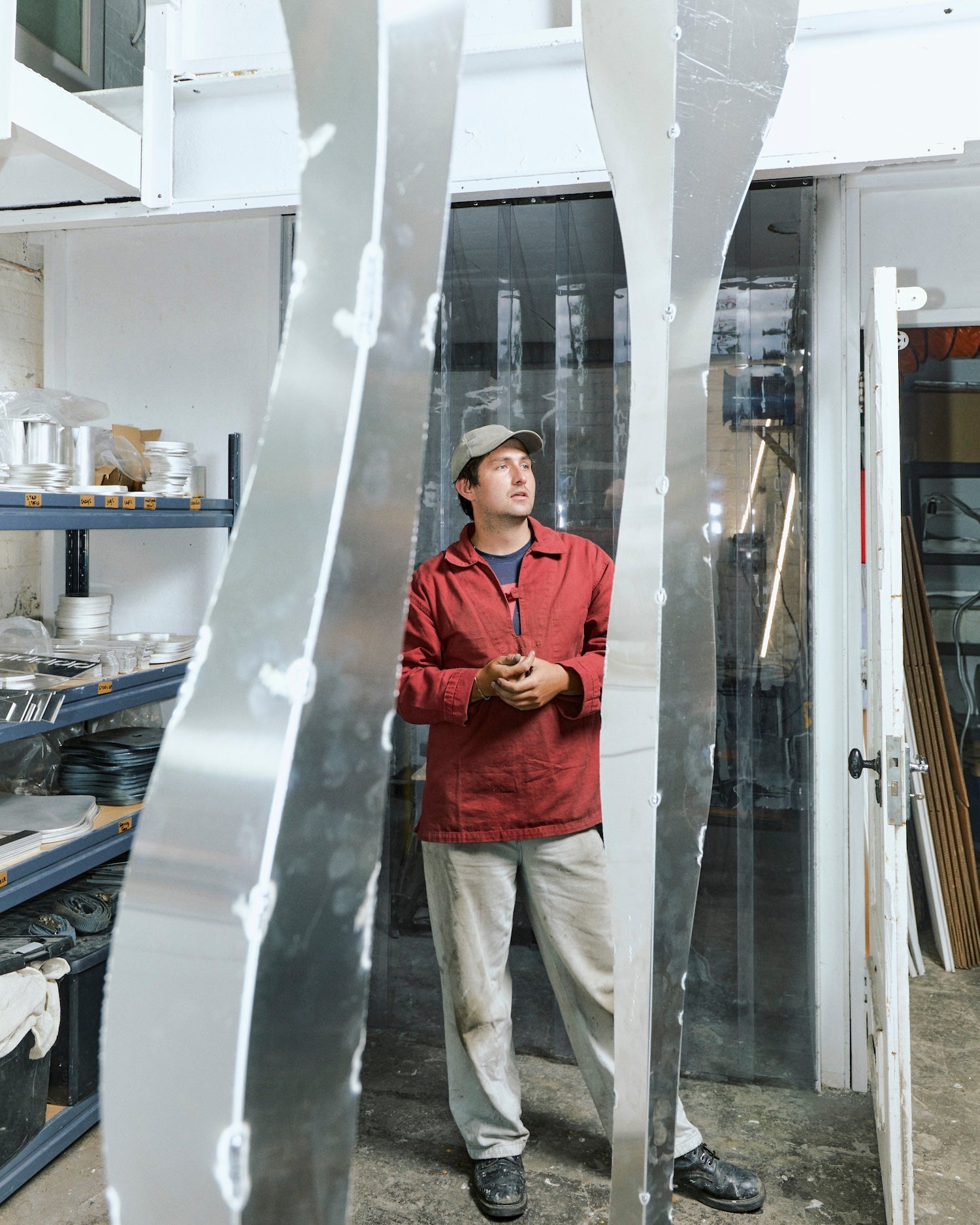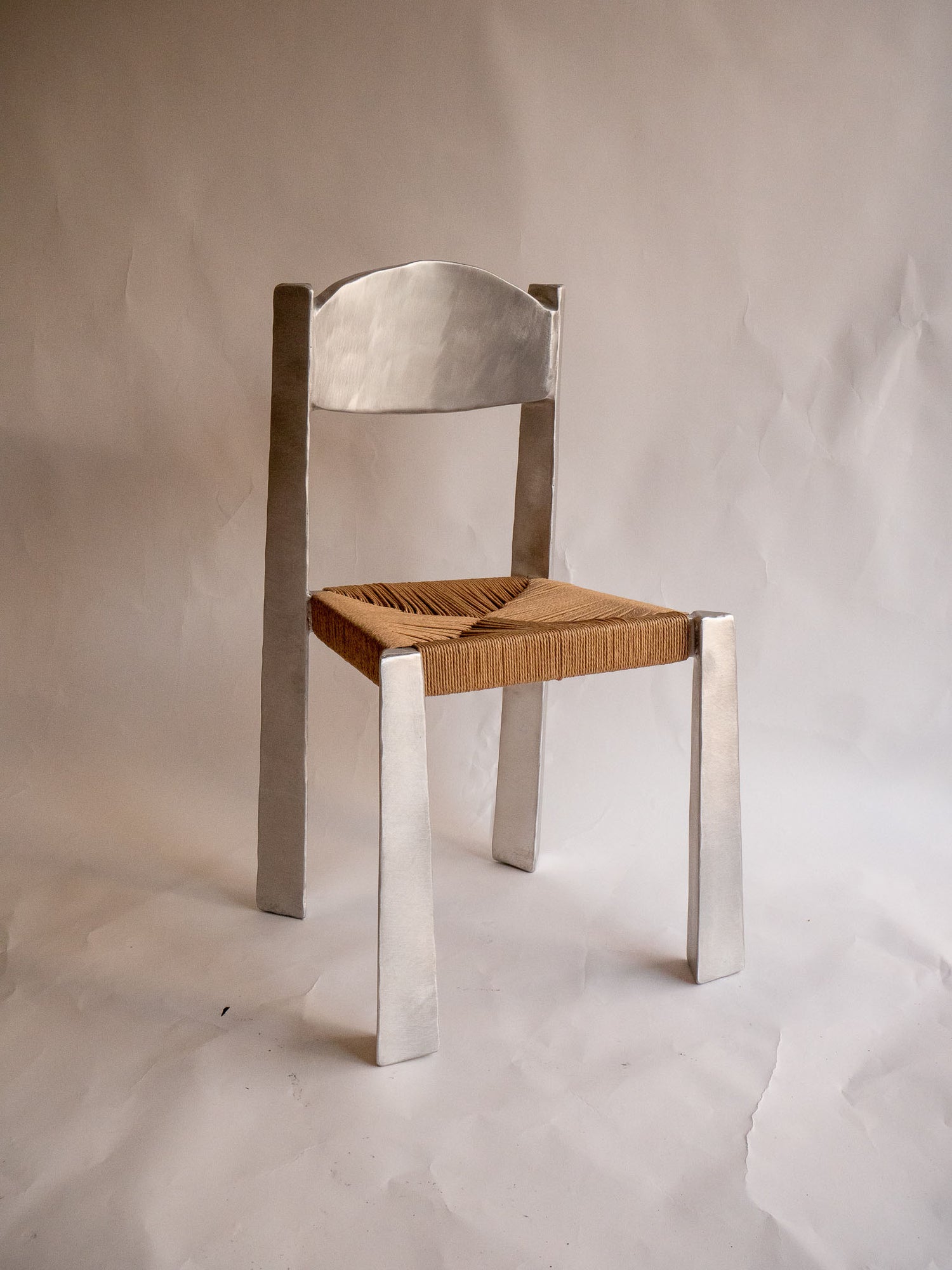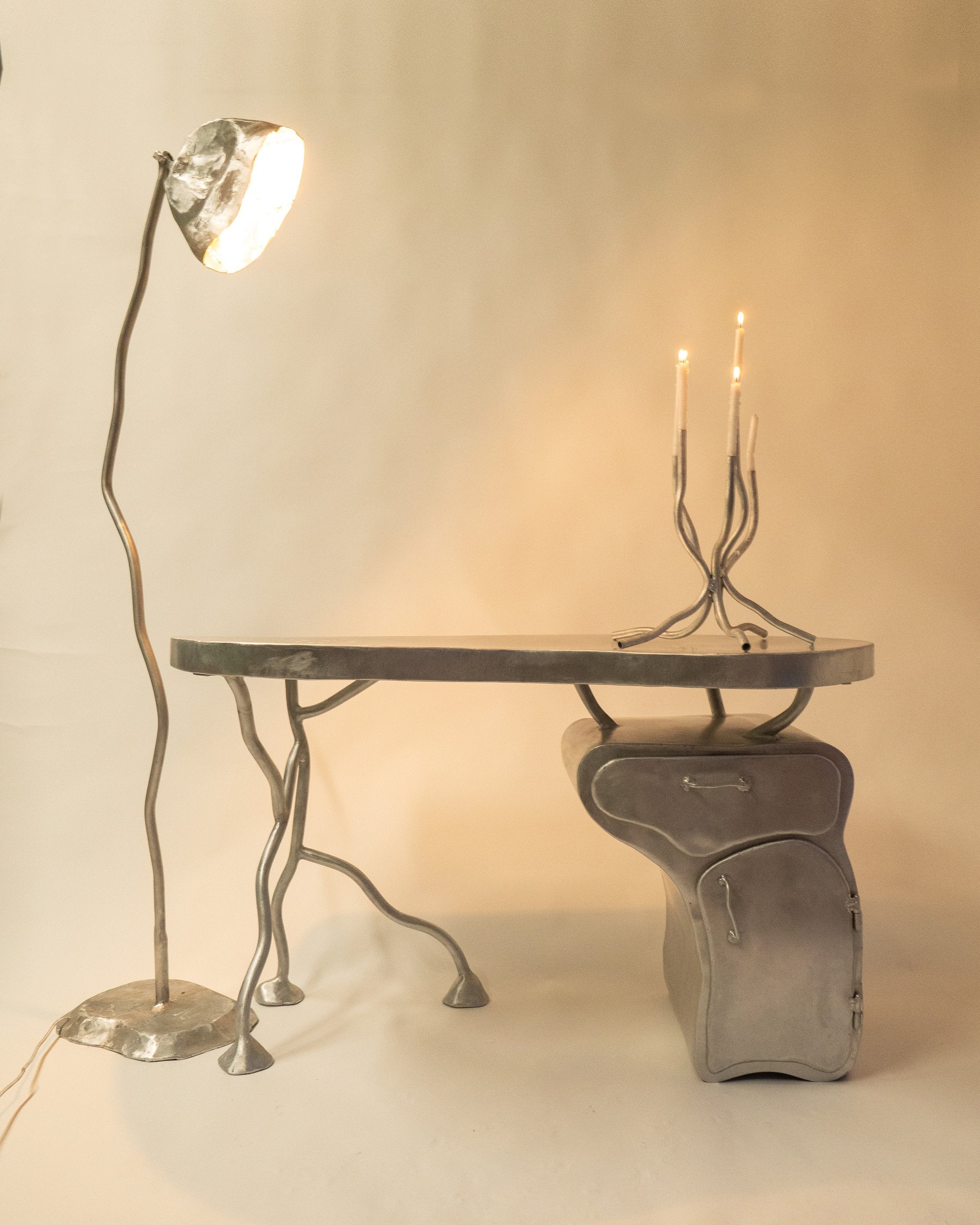Random Towers and Living Room Decoration

I was interviewed a few weeks ago for a digital publication, and one of the questions the interviewer asked me referenced a trip I’d talked about previously to Villa André Bloc. Villa André Bloc was a house with a large garden in Paris where Bloc had built these inhabitable sculptures. I was in awe of the scale and randomness of the work. It really did feel like he’d woken up one morning and just decided to make something quite random, and it had gotten a bit out of control.
I immediately fell in love with the illogical human spirit that the structures contained. I think that when the systems of the world begin to crumble, we need to find ways to dream, to escape, and to make sense of the incomprehensible. Our lives are now filled with instability and incoherence. Instead of imposing more rigidity on our lives and expressions, perhaps a more peaceful existence can be attained by embracing imperfection and the irrational and recognising their beauty.
At a completely different scale to Bloc, I recently made an Amphora. It’s now just sitting in our workshop office, with no real rhyme or reason for existing other than that I woke up one morning and felt like it needed to. I think doing things for a purely expressive purpose is, in many ways, a form of soft resistance against an intensely capitalistic society. Everything in today’s world is supposed to have a purpose and a financial goal. We live in a data- and results-driven culture: posts with friends are measured in likes, art is only talked about if it sells for lots of money, and music is all about YouTube views and monthly Spotify listeners.
To create something with no real ambition beyond doing it for the love of it feels quietly subversive.
I don’t think Villa André Bloc is open to visitors regularly, but if you can go and see it at some point, I look back on that visit as a real turning point in my artistic development - so I would highly recommend it!

In the same interview I mentioned above, I talked a bit about Ron Arad and my preference for his early work. I wanted to take the space here to elaborate a bit on those thoughts.
When I returned to metalwork after a short romance with timber, I was at the Royal College of Art. Amongst the exceptionally talented and experienced technical staff in the metalwork department, one of the team members had been one of Ron’s previous fabricators. He talked about the way they worked, and it sounded so dynamic, sculptural, and expressive.
I fell in love with works like the Big Easy because, similarly to the André Bloc tower, it had so much indescribable energy and life inside it that you immediately forgot it was probably the worst armchair to sit in - possibly ever. This technician would talk about how they would bash and kick the steel into place, and out would emerge this dramatic and charming chair.
Ron then began to outsource his fabrication, and the works seemed to take on a higher and higher level of polish and shine. In my mind, they lost the human energy and spirit that had been so engaging and inspiring in the early work. They changed from energetic works of art into decoration for large living rooms.
As I said in this interview: imperfection is what makes us human. It’s not interesting to me in the slightest to make something perfectly — it’s much more interesting to make something with the scars of its construction, where feeling trumps finish.
It’s like listening to Charli XCX’s Brat or the new Taylor Swift album (I love both, by the way). Charli’s is scrappy, raw, and honest. Taylor’s is decoration to the ears — polished and catchy. Both have their place, but I’d rather make work like Charli.
As always, send me an email if you have any questions or want to come and visit our workshop!
All the love,
Joe
'Balancing Act'

Balancing Act is a collection of two lamps and a candle holder. Inspired by Calder’s Circus, it captures a sense of naive joy and playful freedom, inviting interaction and spontaneity through balanced forms and whimsical design.
This mini collection marks a pivotal moment for Six Dots . it’s the first collection made from a material other than aluminium. It was created to challenge us and push us further, testing our capabilities as a team and as makers.
The pieces were conceived over the summer, when I developed a fascination with the playful work of Alexander Calder. While his work varied in scale, his ability to make hard, industrial materials feel light and playful resonated with me as a designer who has always strived to make metal feel warm, tactile, and safe.
Each piece has its own ambiguous character: the candle holder was initially nicknamed the Squirrel, the table lamp reminded me of a child offering a gift, and the floor lamp evoked a person gazing at something precious.
‘A Folly Through the Trees’

The environment we live in today is increasingly untethered. Good is presented as evil, and evil as good; lawless leaders prevail, and uncanny fake realities surround us. The future is uncertain, the present is troubled, and the past is not what we once believed. How do we create a foundation for our existence without a pillar to lean on?
The digital and the real are becoming increasingly blurred. The work in this show seeks to offer an escape from our untethered reality into a tangible fantasy. It is a rejection of the unreal—grounded instead in purely human, authentic fantasy.
The show is conceived as a diorama: a landscape constructed from sculpture and functional objects. A broken fence, a standing tree, and a folly in a clearing are just a few of the elements used to create an abstraction of the artist’s own imagined perfect place.
Six Dots Design presents an immersive show of sculpture and objects designed to pull us out of our uncanny lives and into a real fantasy.
Private View on the 17th Septemeber
18:00pm to 23:45pm
Location: 30 Hancock Road, London, E33DA, UK
'Precious Things'

Last week, we launched a new collection of objects called ‘Precious Things.’ The idea for this collection was to collate a series of objects that were not similar in form or typology but came together because they all felt special and precious in our hands. The collection ended up being a chair, lamp, bin, cup, and trinket box.
I was watching YouTube the other day and stumbled across Sabrina Carpenter's new video for her song ‘Man Child.’ It immediately made me think of another music video that came out last year: A$AP Rocky’s ‘Taylor Swif.’ Both videos were similar in their artistic vision but came from very different perspectives.
The two music videos were made of fast cuts of surreal images that felt weird, otherworldly, but strangely familiar. Personal favorite moments from A$AP’s video included the giant toes, reminiscent of the thumb people from Spy Kids, and in Sabrina’s video, the reference that I understand to be Kiera Knightley’s pond moment in Atonement.
When times get weird, the art gets weirder. The surrealists of the 20th century responded to times of war and chaos through depictions of life that felt confused and distorted. We live in a time with no sense of truth, no sense of normalcy, and chaos surrounding us. What is interesting is that popular culture is once again reacting to this by creating art that is confusing, challenging, and shows uncanny depictions of real life.
When life feels like it has no basis or foundation, and governments can’t be trusted, the pillars of society reveal themselves to be corrupt. What do we do, and how do we operate our daily lives?
For me personally, the chaos, the war, and the imminent, continuous disaster mean I am clinging further and deeper to the places, things, and people that give me a sense of life and livelihood. ‘Precious Things’ is a collection of objects that made me feel grounded and connected to some form of reality while making them.
I think sometimes when I design and make things, I do so because I know it’s real. I know that I have an idea; I bend, cut, grind, and weld it into shape and create an object that is real. This truth means that regardless of the ocean of uncertainty around me, I can connect to myself and to others through the truth that lies in making and working.
When I look at art, design, and media, I find I am less and less interested in trying to make sense of it or put it in order. All I need is to look at something and feel its presence. If I like it and if it connects to me, then that’s all I need and all that matters to me. I have less and less patience for verbose and confusing descriptions of art or design because when I feel a disconnect between what is written about the work and the execution of the work, I lose trust and faith in it. When the world is already full of mistruths and deception, I lean closer and closer to sensations within myself that I can trust.
This collection, therefore, consists only of pieces that I like and that felt right.
I am looking forward to seeing how the collection is received, but mostly I am proud of the way the work is developing in our studio. A huge thank you to the team of people that makes all the work in our studio come together.
Lots of love,
Joe
'It’s amazing what people will pay for these days'

I was sitting in my workshop one day, welding, when I heard a voice yell, “Hello!” I flipped up my visor to see a man in a ripped jumper and muddy trousers who had cycled his bike into the middle of my workshop.
I politely said, “Hello,” and before I had the chance to establish that this was a private workshop and cycling within it was not permitted, he began asking me questions about what I was doing and what the business did.
In response, I showed him one of the cups we’d designed and made for Atelier 100, a grant scheme run by IKEA and H&M. He took it and asked, “So do you grind the welds back?” I said, “No.”
“Do you polish it?”
I replied, “No, no, that’s it.”
He said, “Blimey, it’s amazing what people pay money for these days,” then peddled off out of the workshop, never to be seen again.
When we talk about design and the role it has in our lives, the classic industrial design answer is that it “solves problems” or “enhances our lives through function.” I mean, if you listen to Dieter Rams, design is all about making a product useful and having as little design as possible. Personally, I think this is complete rubbish. Is the design of an Apple Mac really about function and lack of design?
Absolutely not. It’s about demonstrating status through exclusivity, making the customer feel as though they are at the cutting edge of technology. It’s about ego, status, and affiliation with wealth. The design of the product is not at all about making the trackpad ergonomic to prevent arthritis or about its design being a “lack of design.” These are some of the most over-engineered and designed products ever made.
I truly feel we should all stop pretending that design has anything to do with function. Function is the minimum requirement for any product to be saleable. Let’s say I made a water cup and said, “This water cup is all about function. I designed the correct proportions and weight for it to be a comfortable and effortless way to drink water; everything else is secondary to its function.” In my head, any sane reaction would be to respond, “Well, you’ve just done the absolute bare minimum to meet the requirements of a water cup.” The true design challenge is to digest and placate the raw functional requirements of an object and infuse it with culture and decoration, to make it say something beyond its use-value.
The cups we made for Atelier 100 function well as water cups. The conductivity of the aluminium makes the water feel cool and crisp, the edge is a firm but not too heavy lip, and the proportions fit elegantly in your hand. However, the true value of the cup has nothing to do with these features. Its true value lies in being a statement of values and an expression of humanity in reaction to mass production.
In today’s world, we are surrounded by perfection—perfectly repeated objects, high-polished finishes, and render-to-reality products. I think it’s imperative to have objects around us that remind us that everything is made, everything is designed, and the human hand is everywhere. The objects surrounding us should teach grace and empathy and show that love is not conditional on perfection; in fact, love often requires imperfection.
We make it a requirement of all the pieces we sell in the studio to have an element of variation in the outcome—an opportunity for change or error. We feel this is essential to creating products that show the object was made by someone, somewhere (Waltham Cross, to be precise).
Lots of love,
Joe

















